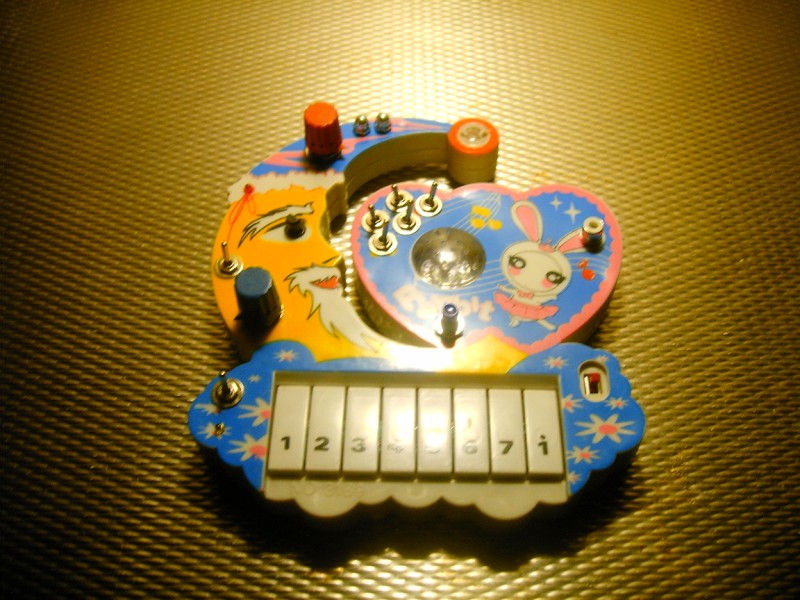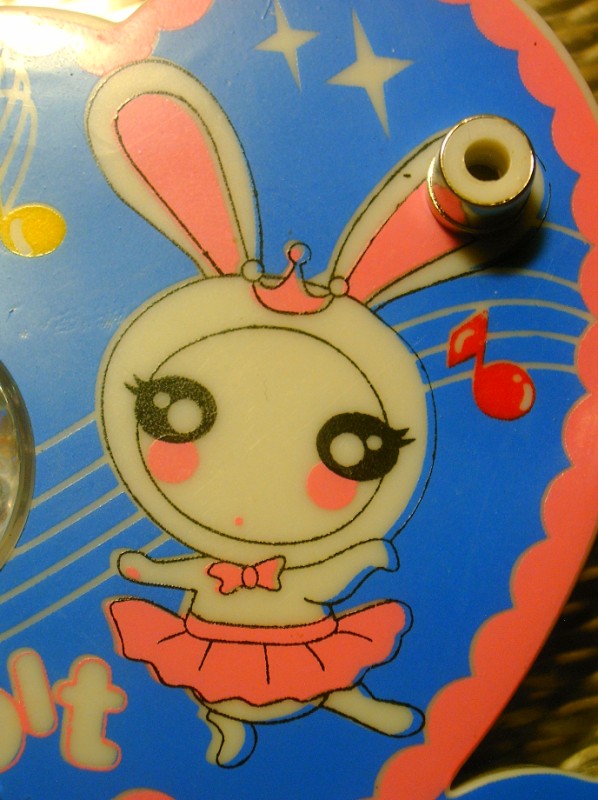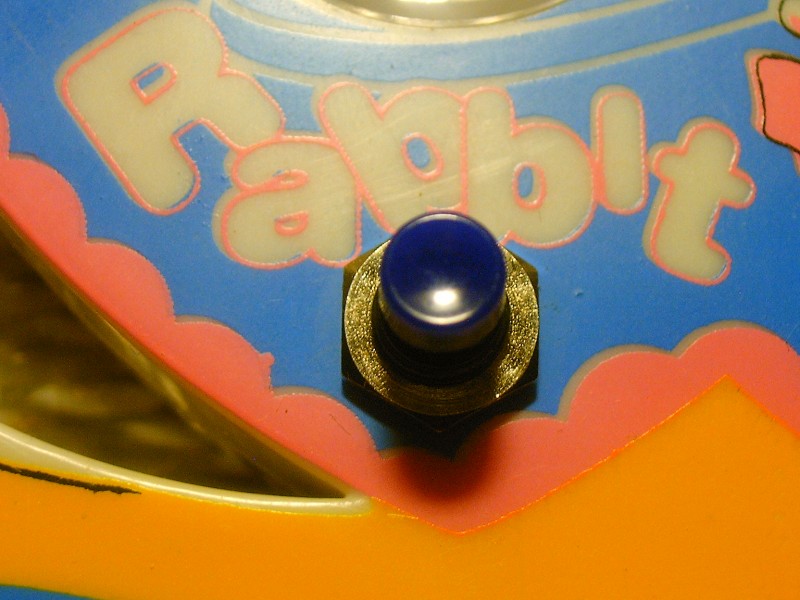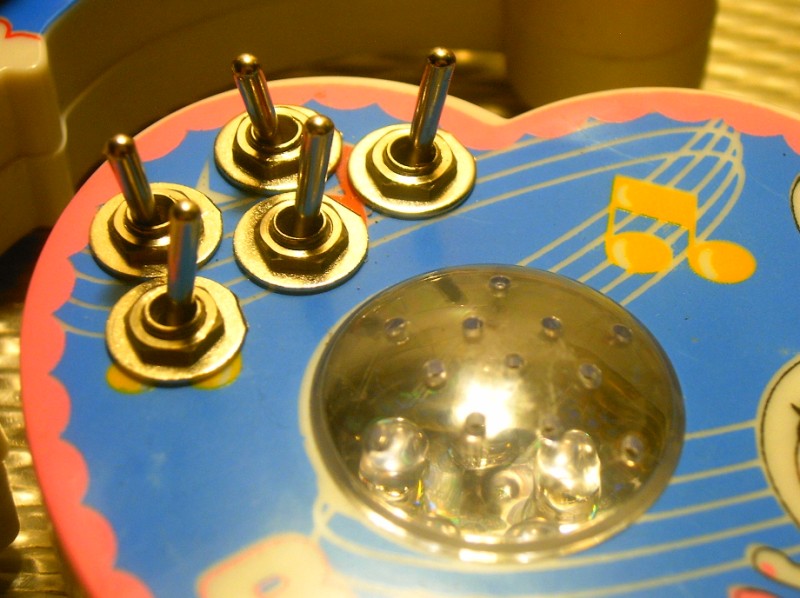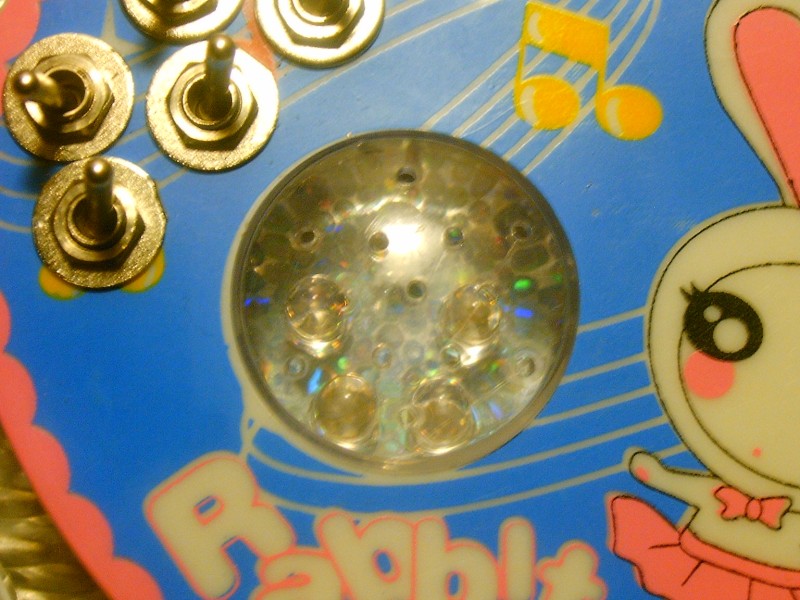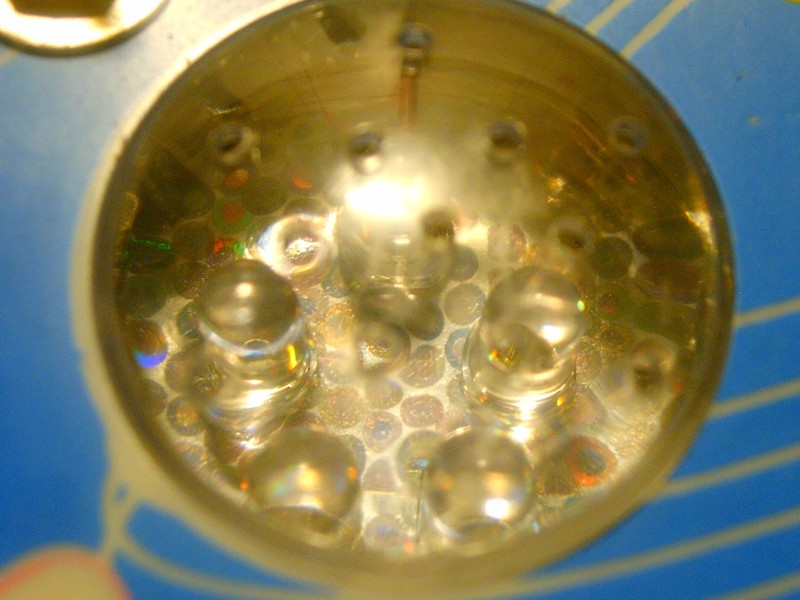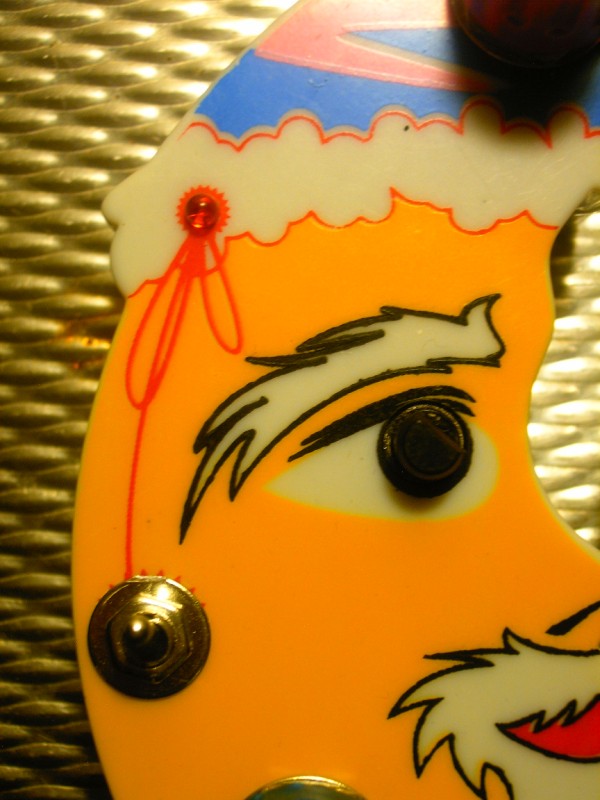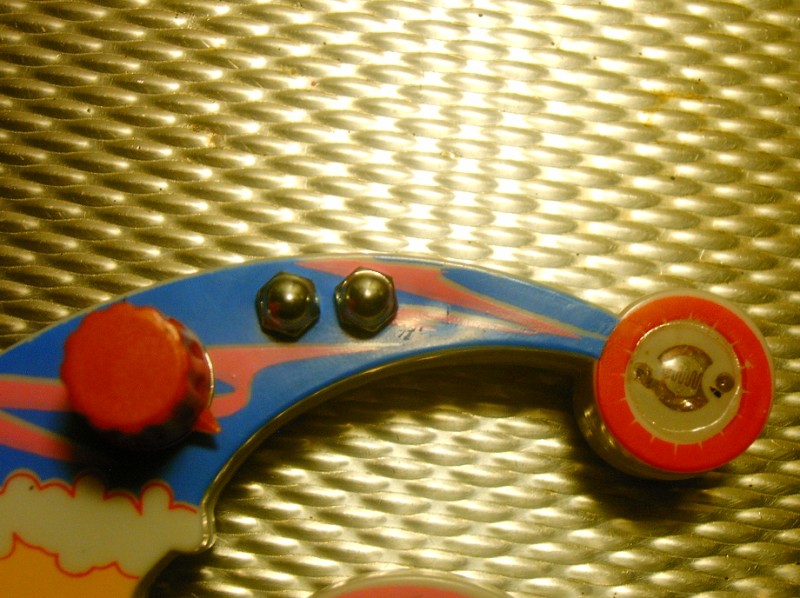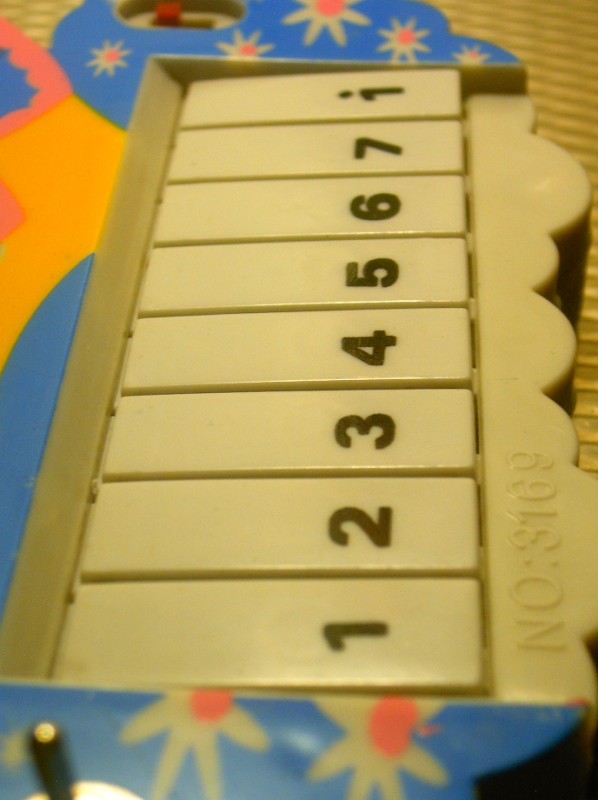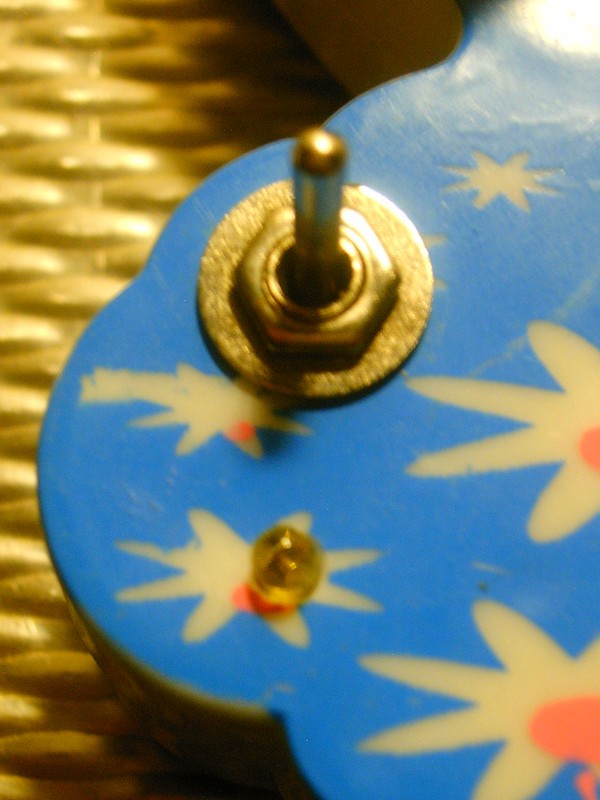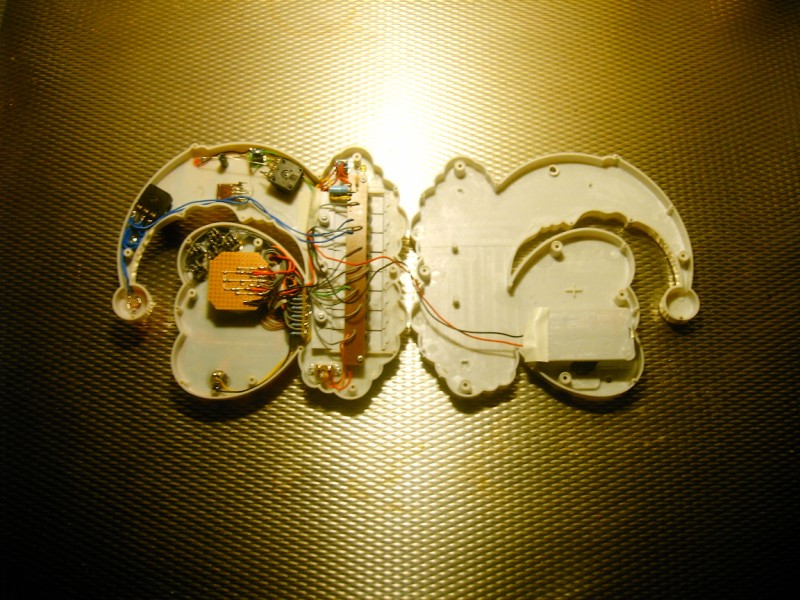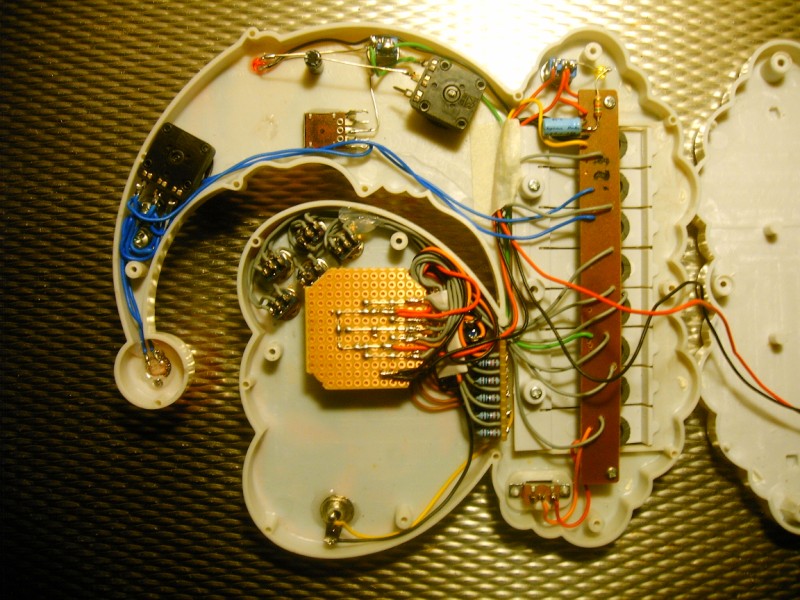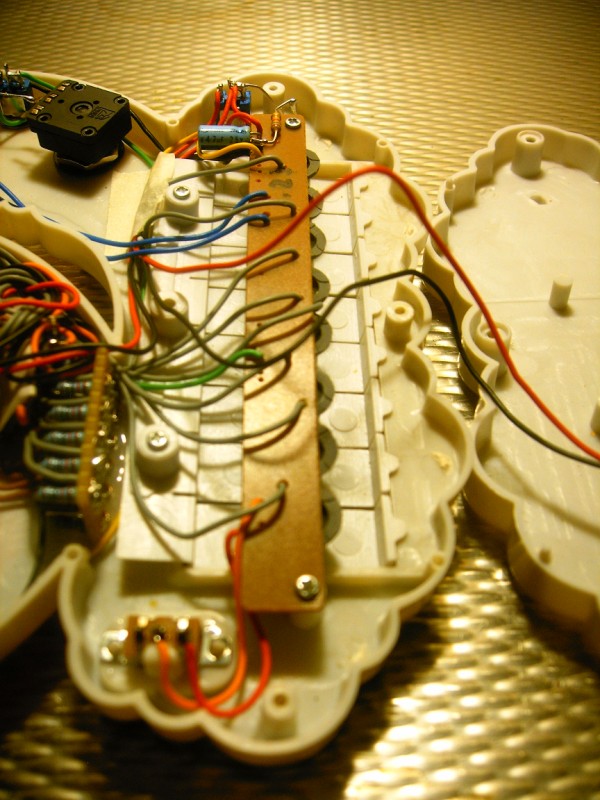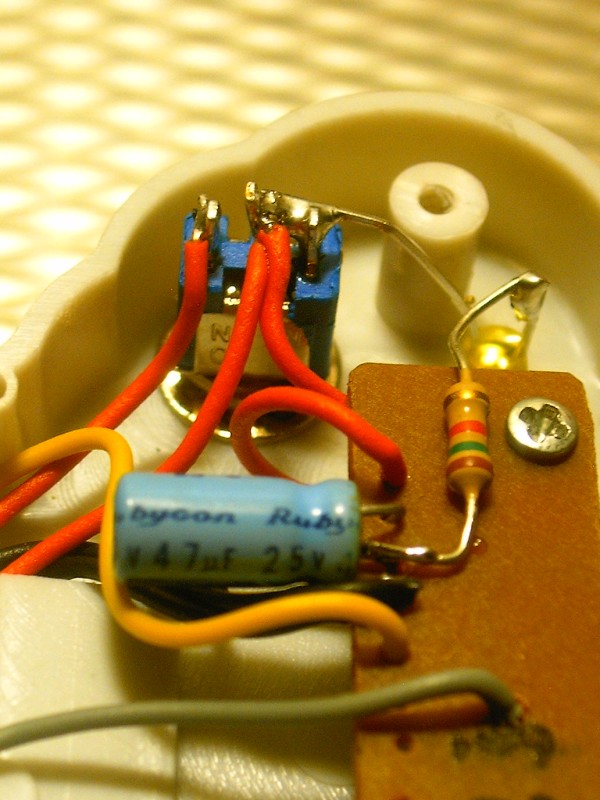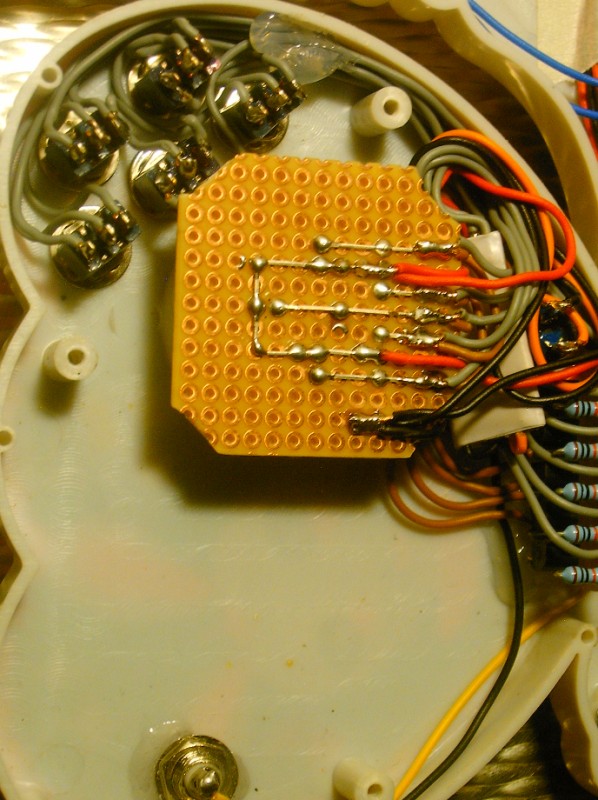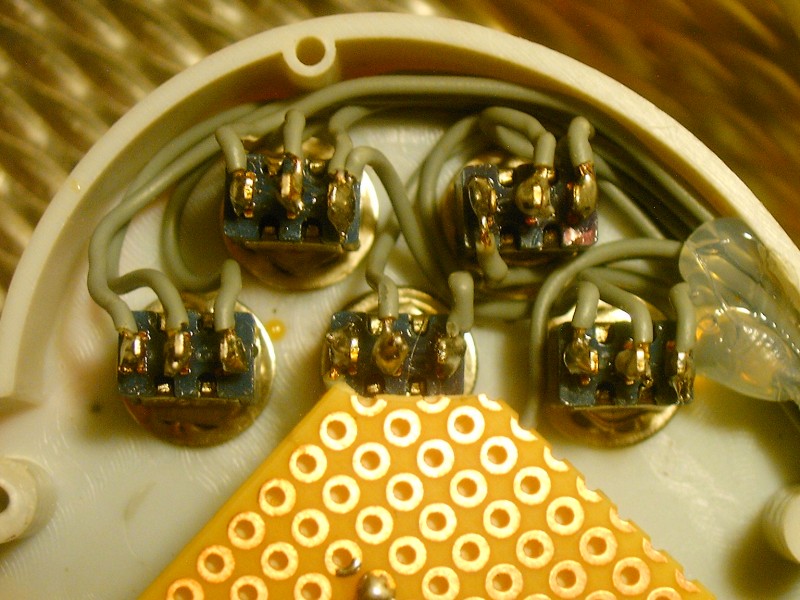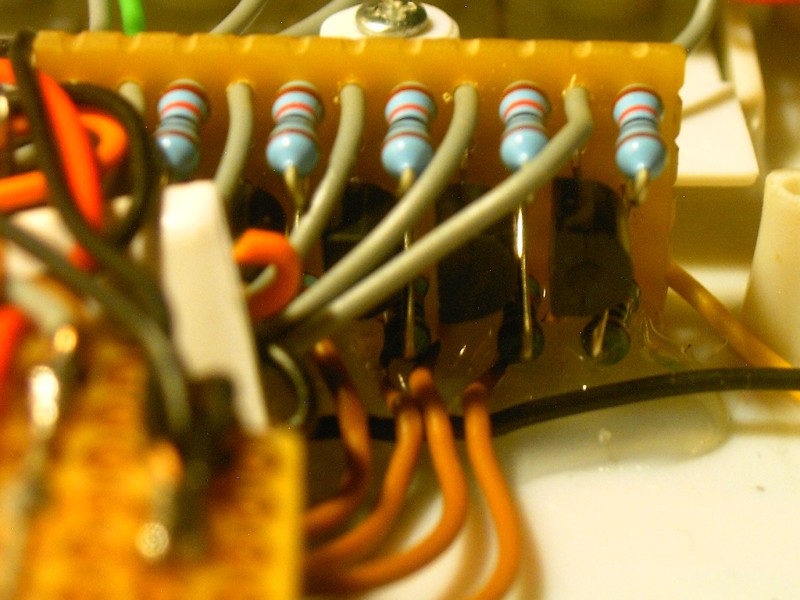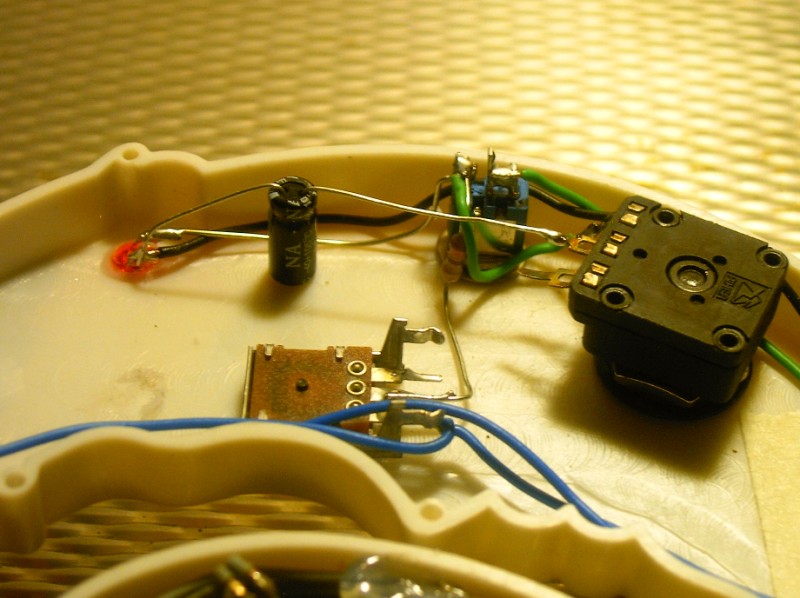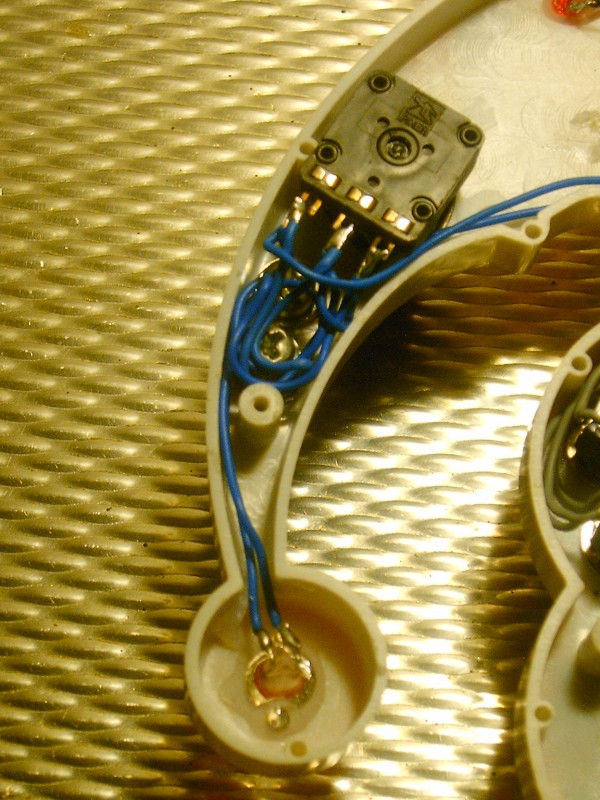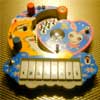
| I'm a big fan of "Alice in Wonderland" so I couldn't resist buying a keyboard with a white rabbit on it, besides that I think the price was only €1,- and it looked great for bending. I put some batteries in it to test if it worked and after that stored it in a box with some other toys I have collected. I had been thinking about using a (LED) bicycle light as a simple sequencer for a while. They usually have at least 3 settings (off/on/blink) but there are also lights that have a bunch of patterns build in. Another nice thing about them is that they only need 3 volts. I had one with 5 LED's and 7 different settings (off not included):
I took out the box with the toys and of course got immediately distracted for a while because of the other toys,.. when I finally got to the white rabbit piano I was a little bit disappointed because in my mind the dome had become bigger over time, but it would probably still work. Originally the dome was a cover for the speaker and it was filled with very small styrofoam balls that would bounce around because of the vibrations. I used a small piece of perf-board covered with holographic cardboard (same as used in my Neon Oscillator) soldered 5 bright blue LED's on, and glued it to the bottom of the dome. I used a saw to get rid of about 1/2 of the bicycle light's PCB and soldered wires to the remaining part, then I covered it in white insulation tape (you can see it on some of the photos stuffed between all the wires). The keys of the piano all connect to Vcc so I used 5 PNP transistors which are connected to the LED's. Because the 'sequencer' has only 5 outputs and the piano has 8 keys I connected each output to a toggle switch to chose between 2 different keys, this makes 10 outputs so 2 keys are connected to 2 of the switches (still get it ?). You can step through the different settings by pressing the blue button. The PCB of the piano didn't have any components accept for 1 capacitor connected parallel to the battery, and of course a black blob (I would like to see another colour for a change). It did have some solder pads with nothing connected to them so I started connecting them in different ways (tip: start with a resistor to prevent frying the circuit). I found out that by connecting a resistor between two of the pads the pitch went up and another pad had a pulsed signal whenever the piano plays a sound. It think there was also another unused pad for which I couldn't find any use. At the tip of the moon's hat (see photos) there's a small piece of clear plastic and underneath it was a small light bulb. It was connected to the speaker but hardly lit up (maybe it should have been connected to the pulsed output ?). I replaced it with a LDR connected to a potentiometer and 2 body contacts for pitch control. Another thing I discovered was that by connecting the pulsed output to 1 of the pitch connections I got some sort of modulation effect. So I connected a potentiometer (the eye-pot) between the two points and added a switch to turn the effect on/off. I also added a LED that flashes when the effect is on. I think it was the next day that I came up with the idea of using a capacitor in series with a potentiometer to effect the modulation. My thought was that because of the charging and discharging of the capacitor I could get kind of sawtooth with the rise/fall time controlled by the potentiometer. I tried some different values for the cap. and pot. and used the ones that sounded best. Now I don't think it's a sawtooth but the effect is great! It can produce delayed tones and very distorted sounds. The last thing I did was add a power on/off switch with a indication LED and of course a audio connector. The small switch on the right is still original and with it you can choose between playing single tones or a short melody (every key has a different one) I think the cover for that switch is still somewhere in the box. |

